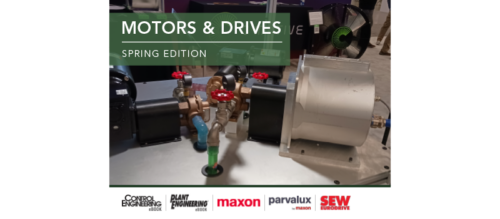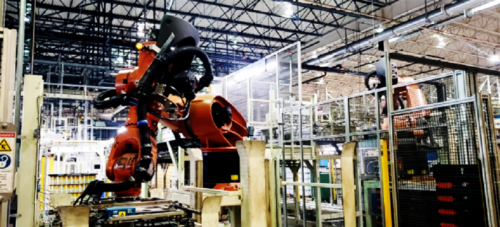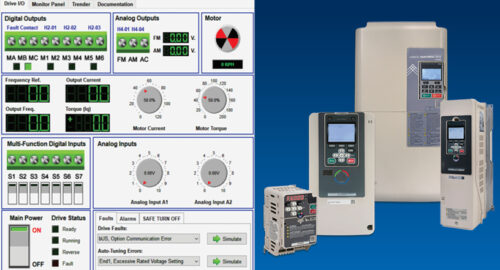Keep compressed air system draining on task and on time
One of the most common problems with down-stream compressed air equipment is a service report of excessive liquid—or death by drowning. A flood of liquid water goes downstream, overwhelms filters and dryers and ends up in the compressed air equipment or a manufacturing process. The amount of water vapor that turns into liquid during an average day is often underestimated.
|
One of the most common problems with down-stream compressed air equipment is a service report of excessive liquid—or death by drowning. A flood of liquid water goes downstream, overwhelms filters and dryers and ends up in the compressed air equipment or a manufacturing process.
The amount of water vapor that turns into liquid during an average day is often underestimated. For example, a 100 horsepower compressor rated at 475 scfm capacity will produce 48 gallons of water in a day when inlet air is at 70 F and 70% RH.
Most of the water vapor, 75% or more, will be condensed and drop out the compressed air ahead of the dryer. If the rest isn’t taken out of the system, it has only one place to go, downstream. It then causes poor performance or failure of drying and filtration equipment, or at least increased maintenance costs. In some cases, it backs up through an inactive compressor, if there are cross connections and no check valves in the system, and cause compressor damage.
The simplest and earliest type of condensate drain, which is still used today, is a partially opened or cracked valve. Instead of going to a receiver tank or separator several times a day, the operator just opens a ball or other type of valve a little, so there is a constant and audible flow of air.
If the valve clogs with pipe scale, it floods the system, which is very likely to happen over time. If a well-intentioned maintenance person shuts it off, the system will also flood. In any event, it is not dependable and very expensive, simply because of the compressed air lost.
If a valve is opened the equivalent of a 1/16 in. hole, it discharges 6.5 scfm or 3,416,400 cubic feet of 100-psig air per year. This equals $683, if you use a cost of $0.20/1000 cubic feet of air. Despite this, you hear the hissing of drop leg drains in many plants.
Drain designs
Some direct-acting float drains came about as adaptations of steam traps. They generally use a float with a lever arm that lifts a plug out of a seat and releases liquid. They have the benefit of only operating when there is moisture present in the system, so compressed air is not unnecessarily wasted.
There can be a problem, because design constraints limit the mechanical force available. The force is small unless the float is very large and on the end of a long lever arm. This is the usual case with float drains used in the natural gas industry, but is seldom used in plant air systems.
For example, a commonly used separator and float drain combination with 1 in. NPT air side connections and a nominal 150 scfm capacity has a drain connection of 1/2 in., but an actual drain orifice size of only 1/16 in. at the end of the lever arm. It does not take a lot of dirt or pipe scale to plug this size orifice.
Another choice is a timed solenoid valve (Fig. 1). These will typically have a 7/16 in. orifice, which is much more tolerant of dirt or pipe scale. These valves operate with much more force than a typical direct-acting float, because of the solenoid’s energy. However, the flow path through them is not a straight line. Because the flow is non linear, the normal recommendation is to use a strainer to keep large particles out of the valve assembly. This works well as long as the strainer and valve are cleaned frequently.
An exception to using a strainer is when the fluid is from a coalescing filter, or a refrigerated dryer downstream of a coalescer. In these cases, the liquid is very clean and there is generally little oil, particulate matter, or pipe scale. Float drains work reasonably well, and the solenoid type is dependable.
The most dependable drain is an actuated ball valve. A straight-through design with 100 psig behind it is virtually impossible to plug. Because the seals wipe when closing, it closes dependably.
A normal motor-operated ball valve operates on a timed cycle to open every X minutes each Y hours, more or less a duplication of what the operator would normally do in a day. This is simple, but if the timer is not adjusted properly, it will waste air or not drain the system enough. There is also a noise issue when air discharges from a drain pipe at line pressure if there is no condensate present. In some plants, dirty compressed air is considered a contaminant, which needs to be avoided anywhere people are working.
There are also ball valves that respond to signals from independent controllers and operate only when needed. This gives the dependability of a full flow design with zero air loss operation. They may be connected to any kind of mechanical or electronic level sensing device. In addition, they also have the capability to indicate or alarm if they fail to open when given a signal to operate.
Another variation on the zero-loss ball valve uses a float to trigger a pneumatic signal. This in turn drives a cylinder connected to the ball valve (Fig. 2). A major benefit is that no electricity is needed, so it may be used on remote/portable equipment or in hazardous installations where explosion proof electrical equipment is specified. In operation, the reservoir is never totally drained, so there is no compressed air loss.
Another plus of demand type valves is that they are more compatible with a typical oil/water separator. A gravity-type separator does not do well with large instantaneous volumes of condensate mixed with escaping compressed air. Air rushing into the unit disrupts a gravity type separator and encourages emulsion formation. This inhibits separation and shortens the life of the charcoal or final filter on the unit.
There are other variations and combinations of valves and actuation systems on the market today, but these are the most widely used.
Selection
Some basic selection criteria are based on air system capacity. If the system is small, or an end point application, the most common device is a solenoid valve with a simple interval timer. They are low cost and work well when there is a small amount of clean fluid from a filter. The amount of air lost from excessive draining is normally not enough to justify a demand type-valve.
For a large plant air system, the best solution is a demand-type or zero-loss style of valve that operates only when there is liquid present. In this case the additional cost of a demand-type valve versus fixed operation is easily paid back with reduced compressed air loss.
Installation tips
Be sure the drain is at the lowest point of the equipment being drained. This seems obvious, but is sometimes overlooked.
-
If the condensate is dirty, install a strainer ahead of solenoid valves. It is always helpful to install a block and bypass for maintenance.
-
Avoid cross-connecting multiple drain lines ahead of a valve. This is an attempt to use one valve to drain more than one point in the system, often done to save initial cost. However, each connection in the system is most likely at a different pressure, due to line losses and pipe friction.
-
Liquid migrates to the lowest pressure available and creates a flood in one device, while the other lines remain dry. The irony is that when the valve is checked, liquid may not discharge because it is backed up somewhere else. Also, cross-connections sometimes bypass filters, dryers, or other treatment equipment.
There have been many attempts to use check valves, inverted bucket traps, or other devices to isolate the lines from each other when using a single valve to drain multiple lines, but this effort to eliminate some valves seldom works in practice.
The best solution is a separate drain on each condensate source (Fig. 3). The output should then go to a common drain for final processing by an oil/water separator or other device to deal with any contamination that is present.
Typical applications
Solenoid valves should be used with coalescing filters, aftercooler separators, and refrigerated dryers.
Ball valves (fixed or demand) should be used with receiver tanks, single tower dryers, aftercooler separators, and drop legs.
Float type valves should be used with coalescing filters, which produce a clean fluid.
Maintenance is most often done by manually operating the valve on a PM schedule. Depending on the operation, this is normally done on a drive-by basis, where maintenance personnel push the manual override on the valve to make sure it operates. They will also make sure there is no water backed up in the system by pushing the button a couple of times.
A good insurance policy is to use a high level device in the separator, receiver tank, dryer, or filter to independently monitor any liquid. If the drain valve does not operate for any reason, a signal will alert the maintenance people before the inevitable flood downstream.
If the drain is at the end of a long run of piping, make sure that there is not an air lock in the system. This is done by connecting a small tube or equalizer line back to where the drain originates. Most float or demand type drains have a connection for this.
More Info:
Questions about compressed air condensate drains can be directed to William Ulrich at 814-774-2631 x254. Article edited by Joseph L. Foszcz, Senior Editor, 630-288-8776, jfoszcz@reedbusiness.com .
Do you have experience and expertise with the topics mentioned in this content? You should consider contributing to our CFE Media editorial team and getting the recognition you and your company deserve. Click here to start this process.





